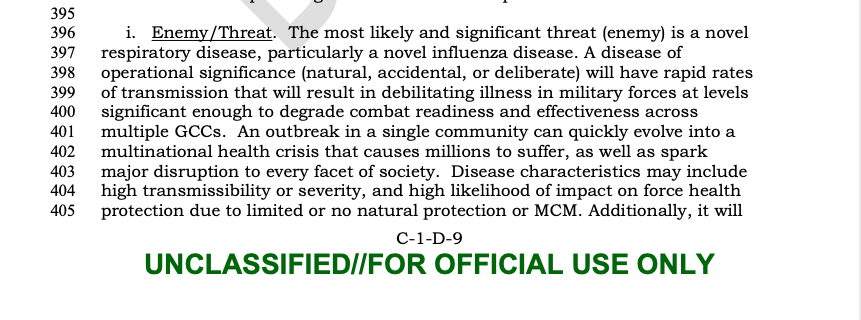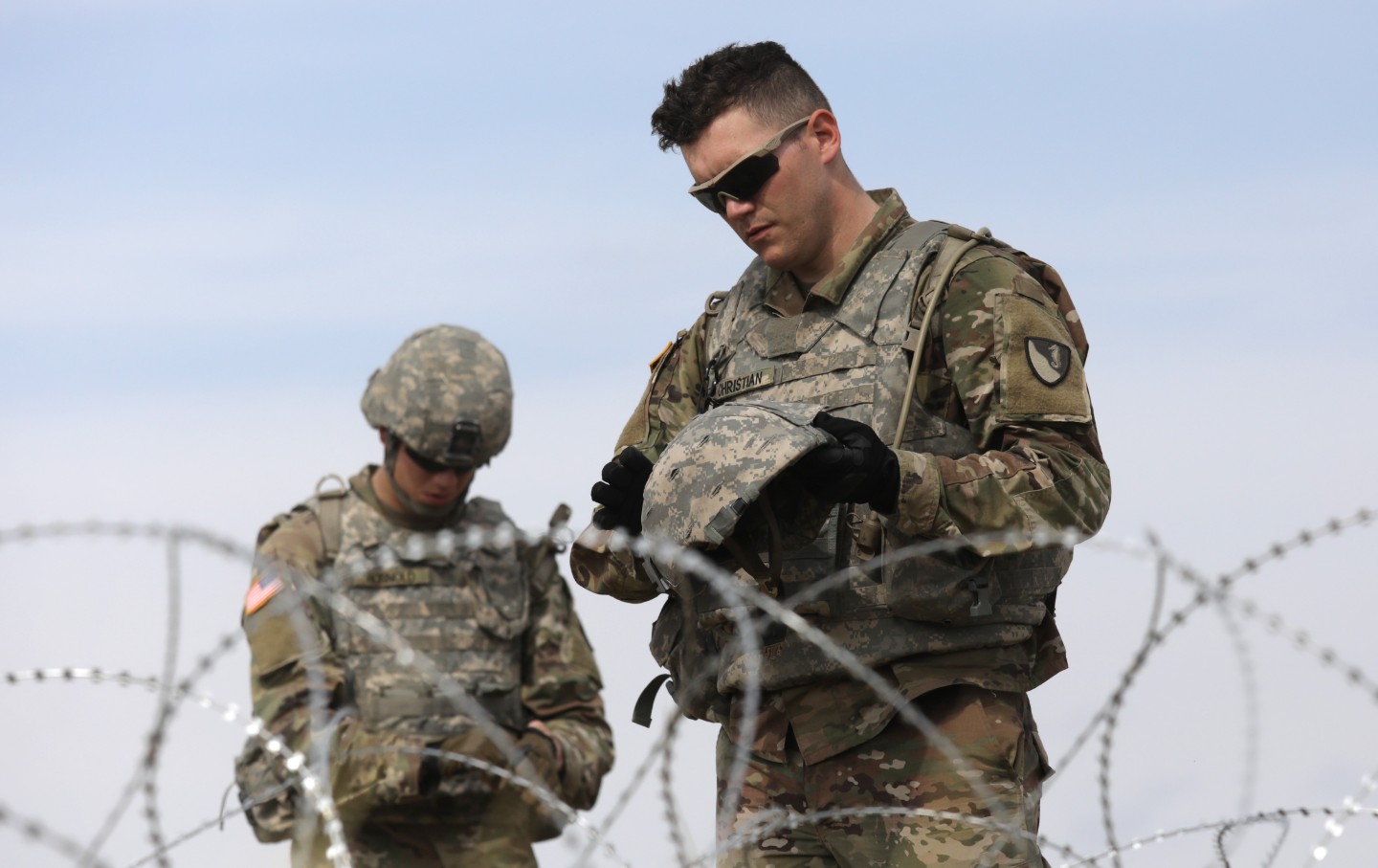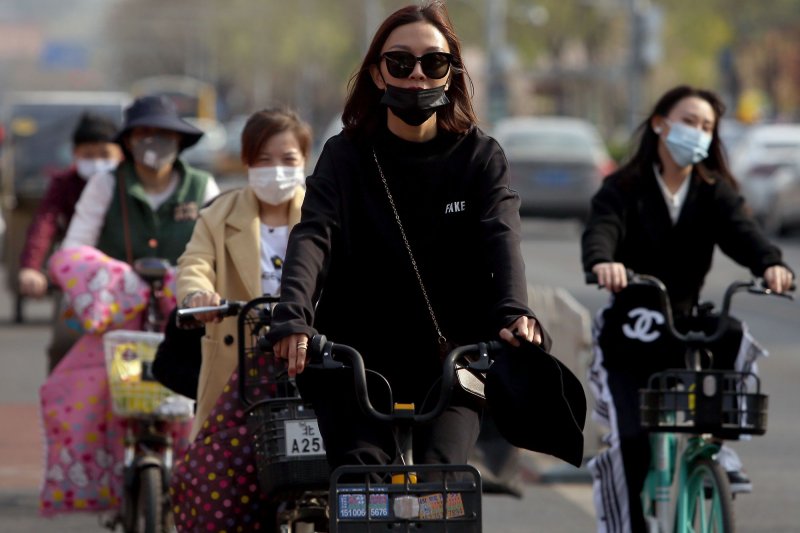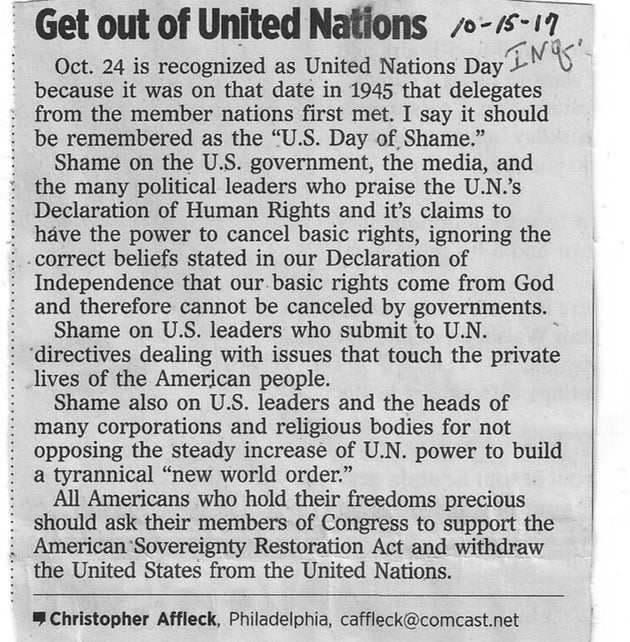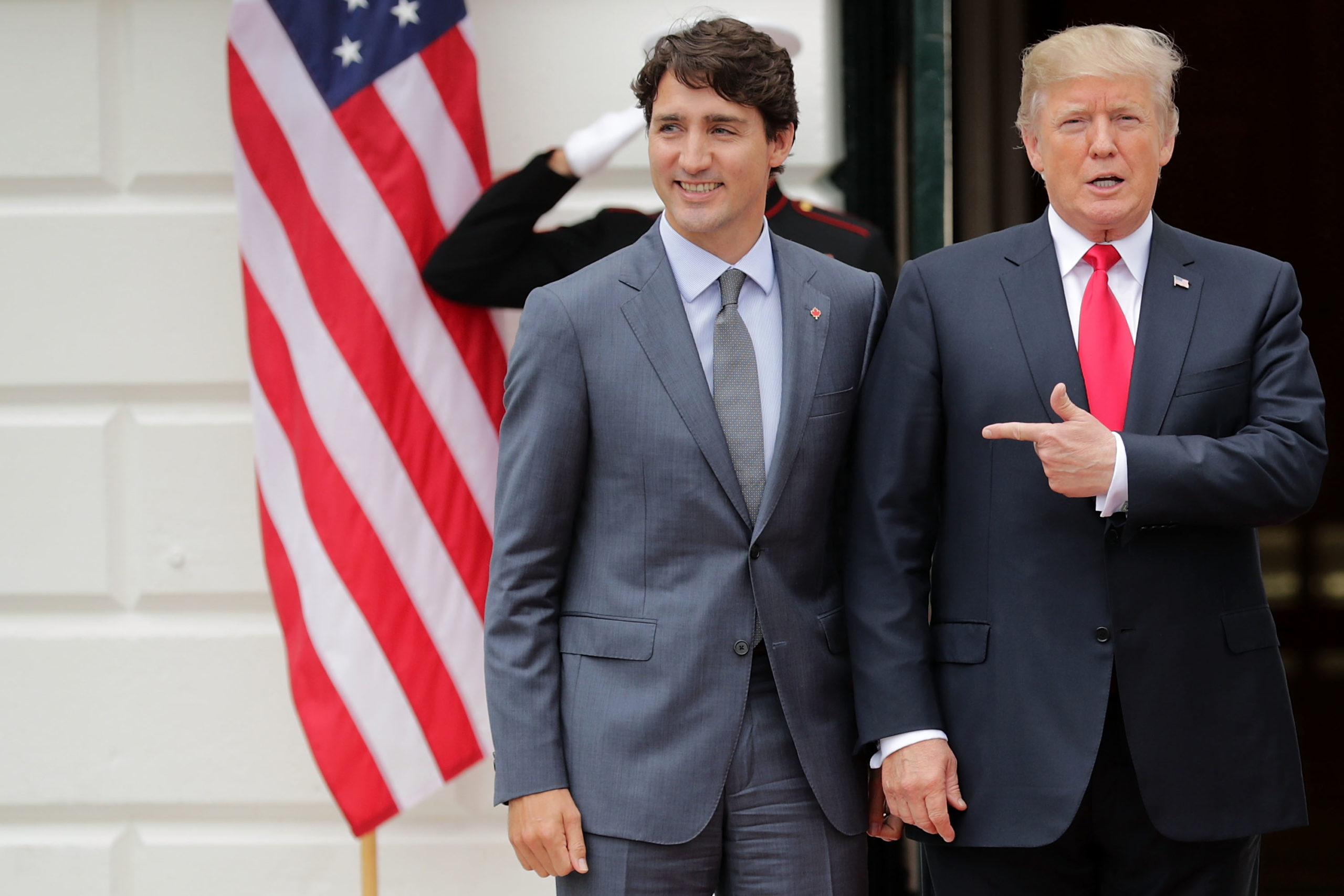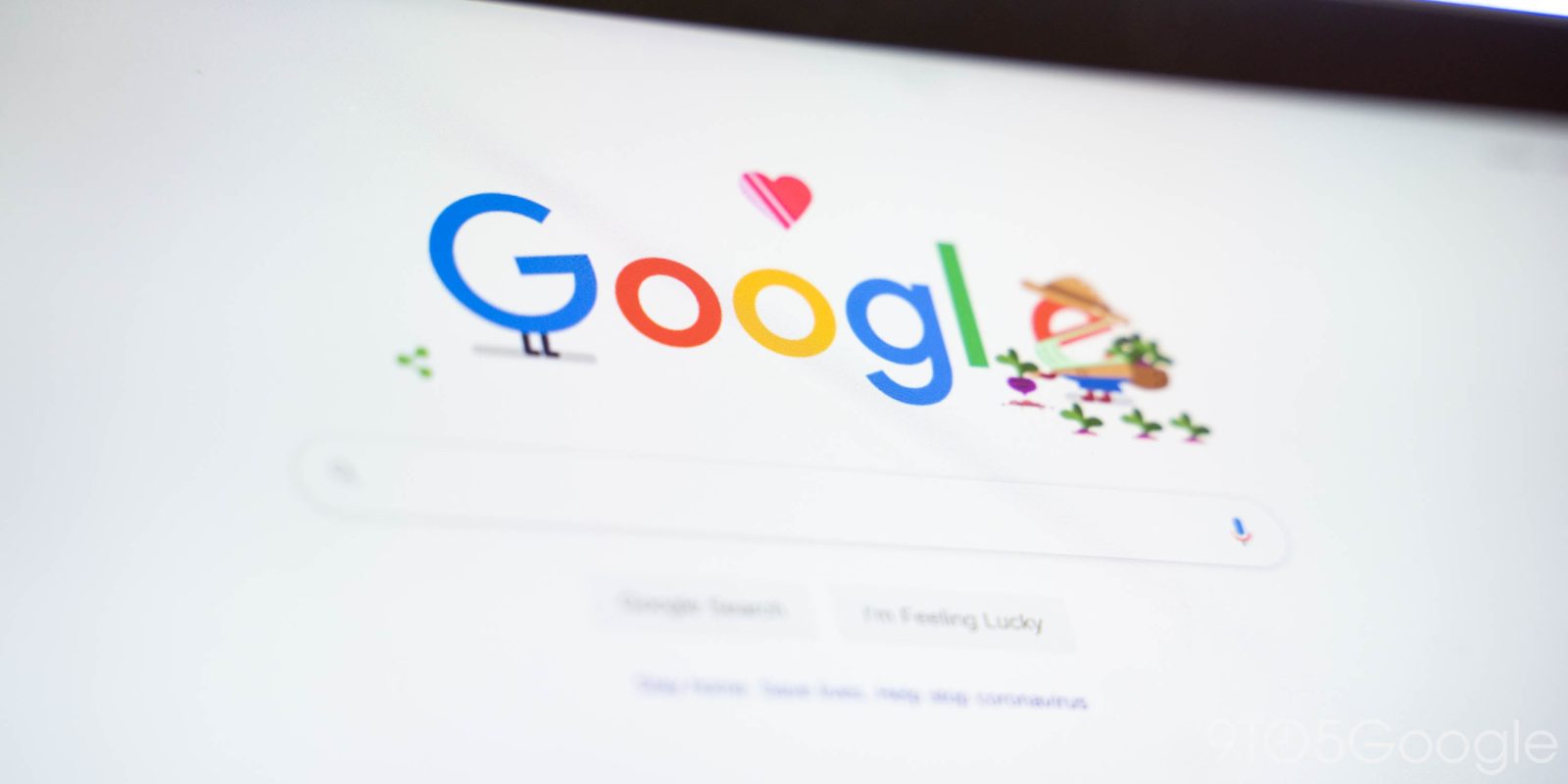Court blocks Trump administration push to make school meals saltier and less healthy
American school meals have been allowed to roll-back standards since 2018, but now a Maryland court says changes ‘not logical’
Gino Spocchia, THE INDEPENDENT APRIL 15, 2020
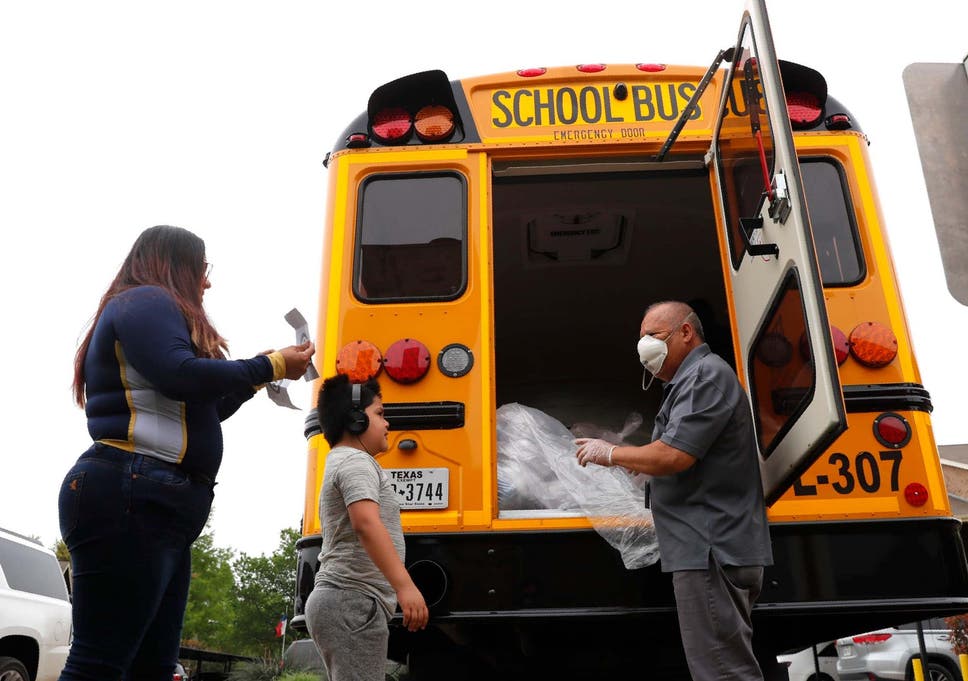
Some US schools have have been distributing food to families during the pandemic ( AP )
A federal district judge has blocked the Trump administration’s proposals on lowering American school food standards after a decision was made against the US Department for Agriculture (USDA).
The Trump administration rolled-back National School Lunch Program nutrition guidelines in 2018, which reduced whole-grain requirements and sodium level restrictions on all school meals.
The District Court of Maryland ruled on Tuesday that the standards reductions were in violation of the Administrative Procedure Act (APA), which regulates how federal agencies develop and issue regulations.
According to the court, the agriculture secretary Sonny Perdue’s school meal regulation changes came without adequate public warning before it came into effect this school year.
“There is a fundamental difference between delaying compliance standards — which indicates that school meals will still eventually meet those standards — and eliminating those standards altogether,” it said.
The legal nonprofit, Democracy Forward, brought the case against the USDA on behalf of the Center for Science in the Public Interest (CSPI) and Healthy School Food Maryland.
In a statement, Democracy Forward’s executive director Anne Harkavy said in a statement that the court’s ruling was a victory for families. “The Trump administration’s unlawful rollback of important school meal nutrition standards jeopardised children’s access to the nutritious foods they need to stay healthy,” she added.
The court added that the USDA decision was “not a logical outgrowth”, but schools that are currently distributing meals during the pandemic are permitted to continue using the Trump administration guidelines until schools reopen.
“None of this applies under the current situation. This is for when we resume post-pandemic school operations,” said Laura MacCleery, senior policy director for CSPI.
The Maryland ruling is the latest change in US school meal standards, since Michelle Obama championed the gradual introduction of whole-grains and sodium reductions in 2012.
The USDA announced in late 2018 that schools would have more flexibility with the rollback in standards and elimination of a final sodium reduction target
However many US schools were reported to have stood-by the healthier measures amid the changes, whilst others did lower nutrition levels.
A USDA spokesperson told The Independent that they do not comment on ongoing litigation.
The Independent has asked the White House for comment.

Federal court strikes down Trump's school nutrition rollbacks
April 14 (UPI) -- A federal judge in Maryland on Tuesday ruled against the Trump administration's plans to roll back regulations on school lunch standards, citing a procedural error.
District Judge George Hazel said Agriculture Secretary Sonny Perdue violated the Administrative Procedure Act when the administration moved to weaken federal nutritional standards for breakfasts and lunches served to schoolchildren in 2018.
The rule change rolled back sodium limits and whole grain requirements.
The court said the rule ultimately ended up being different from the 2017 interim rule.
RELATED Fish, vegetables, whole grains in diet can reduce dementia risk by 45%
"The court concludes that the rule is not inconsistent with federal law, does not reflect unexplained and arbitrary decision making, it does not represent an unacknowledged and unexplained change in position, and the USDA appropriately responded to public comments. The court does find, however, that the final rule is not a logical outgrowth of the interim final rule, so it must be vacated and remanded to the administrative agency for further proceedings," the court wrote.
Democracy Forward, which filed the 2019 lawsuit against the Trump administration on behalf of the Center for Science in the Public Interest and Health School Food Maryland, hailed the ruling.
"This decision is a victory for children and families, for policymaking based on sound science, and for the rule of law. The Trump administration's unlawful rollback of important school meal nutrition standards jeopardized children's access to the nutritious foods they need to stay healthy," said Democracy Forward Executive Director Anne Harkavy.
RELATED Nutrition experts fear 'dirty dozen' produce list will put off consumers
"This victory shows, once again, that the Trump administration's pattern of unlawfully shutting the public out of policy changes that impact their health can't -- and won't -- stand."
The Trump administration proposed further rollbacks in January, giving schools a larger variety of vegetables to serve and making it easier for schools to serve entrees a la carte. The schools would also be allowed greater control in customizing meal patterns and meals. It also implements a performance-based review process to cut down on time spent on paperwork.
The Center for Science in the Public Interest said the new proposed rule changes will lead to more children choosing to foods higher in calories, such as pizza, hamburgers and french fries
American school meals have been allowed to roll-back standards since 2018, but now a Maryland court says changes ‘not logical’
Gino Spocchia, THE INDEPENDENT APRIL 15, 2020

Some US schools have have been distributing food to families during the pandemic ( AP )
A federal district judge has blocked the Trump administration’s proposals on lowering American school food standards after a decision was made against the US Department for Agriculture (USDA).
The Trump administration rolled-back National School Lunch Program nutrition guidelines in 2018, which reduced whole-grain requirements and sodium level restrictions on all school meals.
The District Court of Maryland ruled on Tuesday that the standards reductions were in violation of the Administrative Procedure Act (APA), which regulates how federal agencies develop and issue regulations.
According to the court, the agriculture secretary Sonny Perdue’s school meal regulation changes came without adequate public warning before it came into effect this school year.
“There is a fundamental difference between delaying compliance standards — which indicates that school meals will still eventually meet those standards — and eliminating those standards altogether,” it said.
The legal nonprofit, Democracy Forward, brought the case against the USDA on behalf of the Center for Science in the Public Interest (CSPI) and Healthy School Food Maryland.
In a statement, Democracy Forward’s executive director Anne Harkavy said in a statement that the court’s ruling was a victory for families. “The Trump administration’s unlawful rollback of important school meal nutrition standards jeopardised children’s access to the nutritious foods they need to stay healthy,” she added.
The court added that the USDA decision was “not a logical outgrowth”, but schools that are currently distributing meals during the pandemic are permitted to continue using the Trump administration guidelines until schools reopen.
“None of this applies under the current situation. This is for when we resume post-pandemic school operations,” said Laura MacCleery, senior policy director for CSPI.
The Maryland ruling is the latest change in US school meal standards, since Michelle Obama championed the gradual introduction of whole-grains and sodium reductions in 2012.
The USDA announced in late 2018 that schools would have more flexibility with the rollback in standards and elimination of a final sodium reduction target
However many US schools were reported to have stood-by the healthier measures amid the changes, whilst others did lower nutrition levels.
A USDA spokesperson told The Independent that they do not comment on ongoing litigation.
The Independent has asked the White House for comment.

Federal court strikes down Trump's school nutrition rollbacks
April 14 (UPI) -- A federal judge in Maryland on Tuesday ruled against the Trump administration's plans to roll back regulations on school lunch standards, citing a procedural error.
District Judge George Hazel said Agriculture Secretary Sonny Perdue violated the Administrative Procedure Act when the administration moved to weaken federal nutritional standards for breakfasts and lunches served to schoolchildren in 2018.
The rule change rolled back sodium limits and whole grain requirements.
The court said the rule ultimately ended up being different from the 2017 interim rule.
RELATED Fish, vegetables, whole grains in diet can reduce dementia risk by 45%
"The court concludes that the rule is not inconsistent with federal law, does not reflect unexplained and arbitrary decision making, it does not represent an unacknowledged and unexplained change in position, and the USDA appropriately responded to public comments. The court does find, however, that the final rule is not a logical outgrowth of the interim final rule, so it must be vacated and remanded to the administrative agency for further proceedings," the court wrote.
Democracy Forward, which filed the 2019 lawsuit against the Trump administration on behalf of the Center for Science in the Public Interest and Health School Food Maryland, hailed the ruling.
"This decision is a victory for children and families, for policymaking based on sound science, and for the rule of law. The Trump administration's unlawful rollback of important school meal nutrition standards jeopardized children's access to the nutritious foods they need to stay healthy," said Democracy Forward Executive Director Anne Harkavy.
RELATED Nutrition experts fear 'dirty dozen' produce list will put off consumers
"This victory shows, once again, that the Trump administration's pattern of unlawfully shutting the public out of policy changes that impact their health can't -- and won't -- stand."
The Trump administration proposed further rollbacks in January, giving schools a larger variety of vegetables to serve and making it easier for schools to serve entrees a la carte. The schools would also be allowed greater control in customizing meal patterns and meals. It also implements a performance-based review process to cut down on time spent on paperwork.
The Center for Science in the Public Interest said the new proposed rule changes will lead to more children choosing to foods higher in calories, such as pizza, hamburgers and french fries



